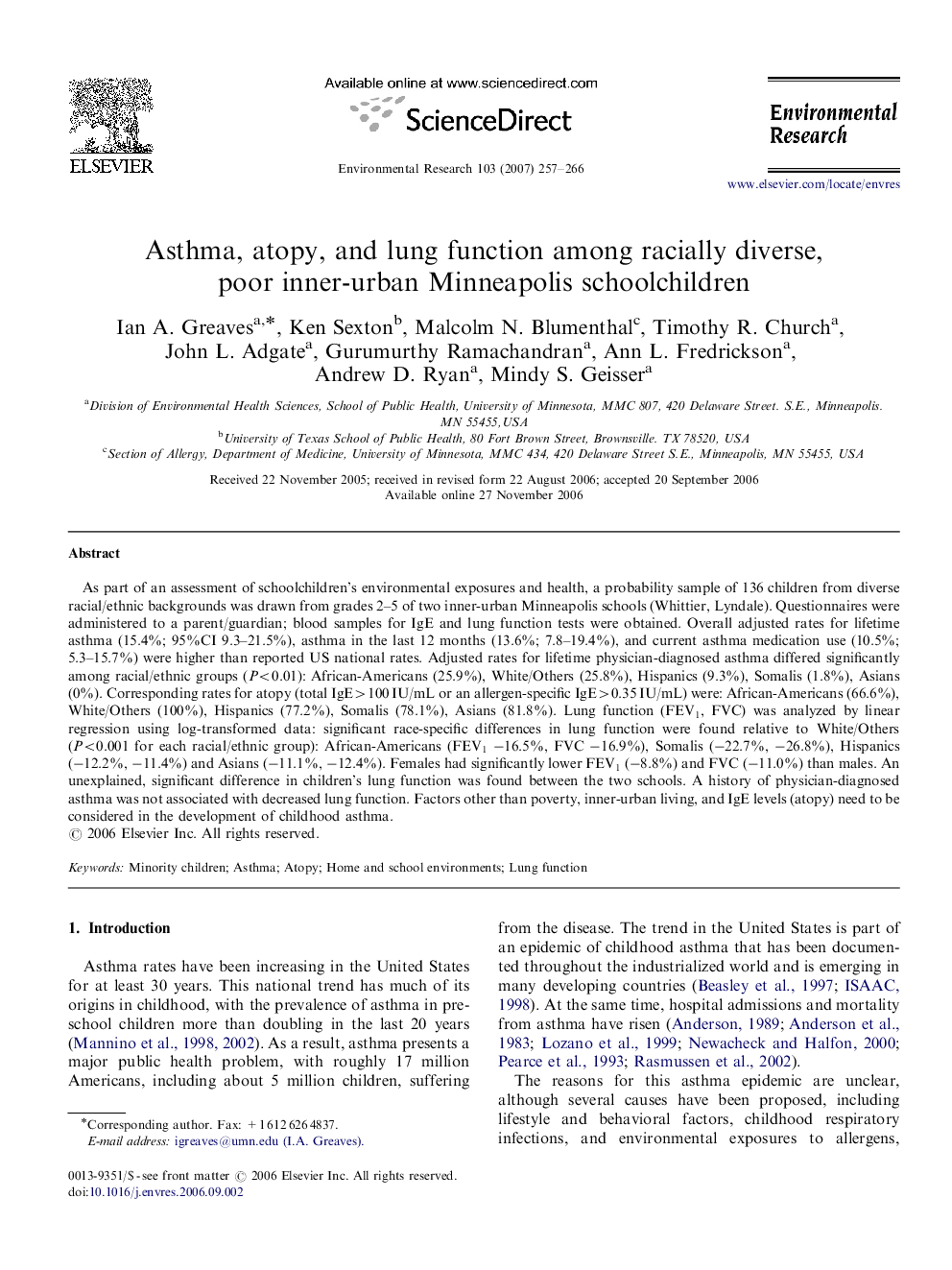| Article ID | Journal | Published Year | Pages | File Type |
|---|---|---|---|---|
| 4470939 | Environmental Research | 2007 | 10 Pages |
As part of an assessment of schoolchildren's environmental exposures and health, a probability sample of 136 children from diverse racial/ethnic backgrounds was drawn from grades 2–5 of two inner-urban Minneapolis schools (Whittier, Lyndale). Questionnaires were administered to a parent/guardian; blood samples for IgE and lung function tests were obtained. Overall adjusted rates for lifetime asthma (15.4%; 95%CI 9.3–21.5%), asthma in the last 12 months (13.6%; 7.8–19.4%), and current asthma medication use (10.5%; 5.3–15.7%) were higher than reported US national rates. Adjusted rates for lifetime physician-diagnosed asthma differed significantly among racial/ethnic groups (P<0.01): African-Americans (25.9%), White/Others (25.8%), Hispanics (9.3%), Somalis (1.8%), Asians (0%). Corresponding rates for atopy (total IgE>100 IU/mL or an allergen-specific IgE>0.35 IU/mL) were: African-Americans (66.6%), White/Others (100%), Hispanics (77.2%), Somalis (78.1%), Asians (81.8%). Lung function (FEV1, FVC) was analyzed by linear regression using log-transformed data: significant race-specific differences in lung function were found relative to White/Others (P<0.001 for each racial/ethnic group): African-Americans (FEV1 −16.5%, FVC −16.9%), Somalis (−22.7%, −26.8%), Hispanics (−12.2%, −11.4%) and Asians (−11.1%, −12.4%). Females had significantly lower FEV1 (−8.8%) and FVC (−11.0%) than males. An unexplained, significant difference in children's lung function was found between the two schools. A history of physician-diagnosed asthma was not associated with decreased lung function. Factors other than poverty, inner-urban living, and IgE levels (atopy) need to be considered in the development of childhood asthma.
